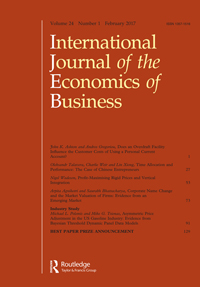
Bank-Firm Relationships and International Banking Markets
This paper reviews how long-term relationships between firms and banks shape the structure and integration of banking markets worldwide. Bank relationships arise to span informational asymmetries that are endemic in financial markets. Firm-bank relationships not only entail specific benefits and costs for both the engaged firms and banks, but also directly affect the structure of banking markets. In particular, the sunk cost of screening and monitoring activities and the 'informational capital' collected by the incumbent banks may act as a barrier to entry. The intensity of the existing firm-bank relationships will determine the height of this barrier and shape the structure of international banking markets. For example, in Scandinavia where firms maintain few and strong relationships, foreign banks may only be able to enter successfully through mergers and acquisitions. On the other hand, Southern European firms maintain many bank relationships. Therefore, banks may consider entering Southern European banking markets through direct investment.





